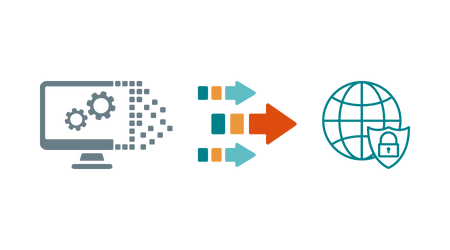Digital transformation is no longer a new concept – various business functions have already embraced cutting-edge technology to stay ahead of the curve. From IT, sales, and marketing to customer support and even finance, it is evident that most departments understand how integral the transformation is to gain a competitive advantage and continue to win customers.
However, when it comes to Governance, Risk management, and Compliance (GRC), most are still stuck with archaic, ad-hoc processes. Too many organizations still manually run tests, collect evidence for audit purposes, and assign tasks to team members. Unfortunately, GRC software solutions continuously fail to meet the needs of the modern enterprise.
This frustration was reflected in a report by the KPMG, where more than half of senior-level executives unanimously voiced that risk and compliance would be the biggest challenge for organizations for years to come.
On the same note, IBM conducted a survey of more than 120 risk, compliance, and technology professionals worldwide. Nearly half of the respondents considered their organization as playing “catch-up.”
In today’s environment of ever-changing security threats, playing “catch-up” puts organizations at significant risk from both a competitive and security perspective.
Challenges with Existing Compliance & GRC Processes
Previously, cyber risks were easily identified with basic tools and methodology, but that is no longer the case. As more companies move an increasing number of their systems to the digital realm, they’ve created new attack vectors for hackers to exploit and face a constantly evolving landscape of threats.
Legacy GRC software solutions can barely keep up, and employees must pick up the slack.
Some of these shortcomings include the following:
- Having to repeat work to meet multiple compliance standards
- Manual collection and sharing of evidence and controls
- Insufficient integrations with existing tools and systems
- No capability to track tasks assigned to various stakeholders throughout the organization
- A lack of holistic reporting of a company’s risk at any given time
This results in wasted time and money and creates unnecessary risk.
Benefits to Transforming Your GRC Program Digital-First
According to Hyperproof’s 2021 IT Compliance Benchmark Survey, 61% of respondents admitted that their ad-hoc approach was ineffective at mitigating risks. These same respondents shared that their respective organizations suffered through data breaches and/or data privacy violations within the last three years. Unsurprisingly, 85% plan on evaluating new tools to automate their compliance process.
Transforming an organization’s GRC process from siloed and manual to automated and future-proof can yield positive results.
Implementing an integrated GRC program with a digital-first approach has many benefits. New-and-improved GRC solutions can provide the following:
A More Productive Team
Whether a company has an entire team or one expert dedicated to leading and carrying out GRC procedures, supporting multiple compliance standards simultaneously requires a great deal of leg work. Next-gen GRC software unlocks massive productivity gains by helping everyone on the team understand what they need to do and how to do it. Having the proper solution in place lessens the workload, giving employees more time and enabling them to focus on more pressing matters.
A Unified View of Compliance & Risk
Maintaining compliance is a team sport; all company members must buy into a risk-reduction culture. Gaining a unified view of risk across the organization provides GRC teams with an accurate measure of risk at any given time, and holistic reporting can help elevate information security and compliance programs to a board level.
Risk Reduction
A survey report by IBM reflected that an overwhelming 83% of risk, compliance, and technology experts polled that advanced tech has helped their organization identify data patterns. As a result, they were able to manage risks more effectively.
Dramatic Cost Savings
By streamlining operations and making teams more efficient, GRC software solutions can save costs by slowing down the need to hire additional employees due to their task-bearing nature. Additionally, advanced technology can aid decision-making by giving a holistic view of the risk and compliance needs.
Strengthened Customer Relations
This comes in two parts. First, the likelihood of incorrect information being provided to customers would be eliminated. Second, the trust between both parties would be solidified if the customer had the impression that a company was using premier solutions around sensitive information. IBM has also reported that 85% of respondents stated that advanced technology use for GRC activities enhances the data quality.
Minimized Lost Deals & Accelerated Sales Cycle
Lengthy security questionnaires and attestations often slow sales processes that the vendor is meeting compliance requirements with various certifications. Next-gen GRC solutions allow organizations to proactively and transparently share their security posture and compliance hygiene with prospects, helping to speed up sales cycles and decreasing the risk of losing a sale due to inaccurate or out-of-date information.
Steps to Building a Digital-First GRC Program
The following steps are a good roadmap to follow if one wants to build a digital-first GRC program.
- Take stock of the current tech stack. What tools are being used? Where is there overlap? Which tools are mission-critical? Where are the gaps?
- Identify inefficient processes that can be improved. Consider looking at how evidence is collected, task delegation, how sensitive documentation is being shared, and things of that nature. One prime example includes examining how an organization identifies risks and analyzes incidents. Many that still use legacy GRC software do not have a real-time, proactive approach. Often, they are reactive, analyzing the past and then putting controls in after the fact without preventing them in the first place. This step will help you identify requirements for vendors to help bring digital transformation to your GRC program.
- Analyze vendors. Once you’ve identified major gaps and inefficiencies, you can look to new vendors to address them. After compiling your requirements for software solutions, consider conducting a market analysis by researching the next-gen GRC solution providers that address these needs.
- Build a Broader Culture Around GRC. For a digital-first GRC program to be truly successful, organizations must be able to work with a full 360-degree view of their compliance procedures, with everyone participating. Ensuring GRC processes are developed and carried out across the entire enterprise is key to a company’s longevity. Fortunately, newer GRC solutions have taken this pain point into account and have created applications where everyone can do their part without much effort.
- Rely on the experts. Cutting-edge technology and predictive artificial intelligence (AI) have been created to combat legacy GRC software’s antiquated methods. Backed by these developments are professionals who have lived and breathed the GRC industry. Supporting those professionals are their dedicated team members from various departments and audit partners – all of them with their own expertise. Why spend countless amounts of time and money when there is an easier option?
While building a digital-first GRC program may seem daunting at first, the rewards outweigh the costs. GRC can transform from a cost center to a function that truly drives business value, with more efficient teams, better-secured systems, and an overall healthier framework for maintaining compliance with major certifications.



